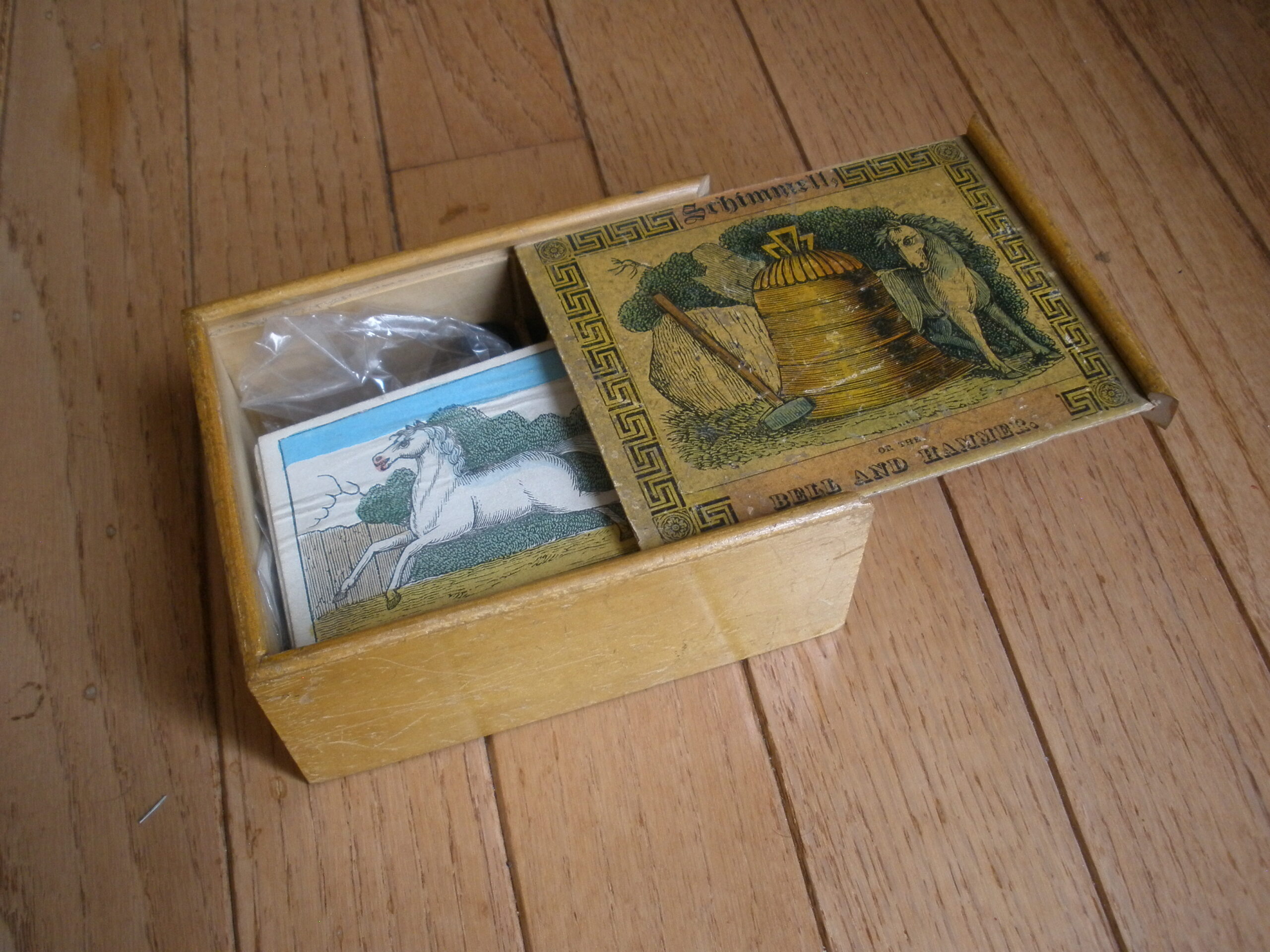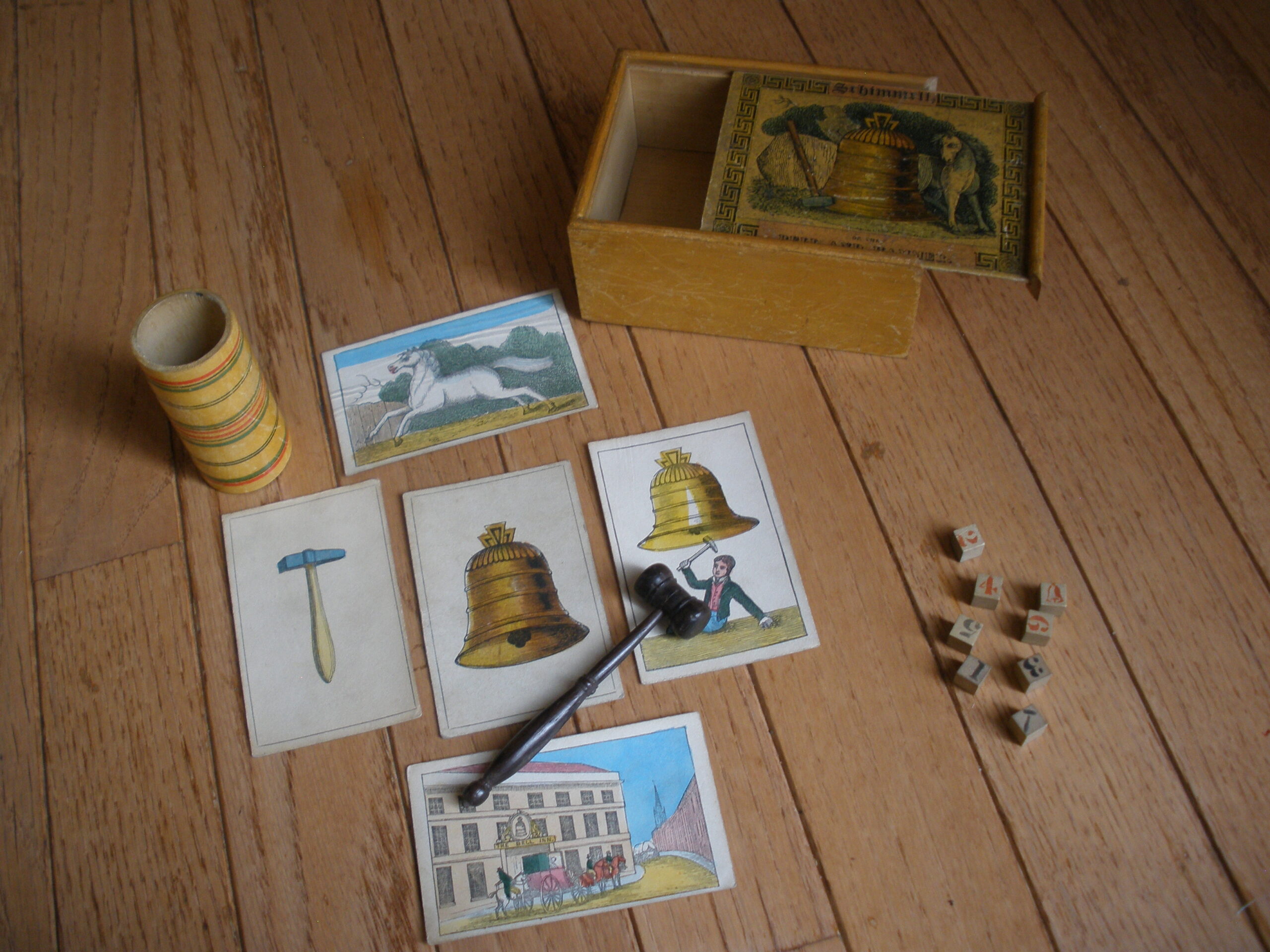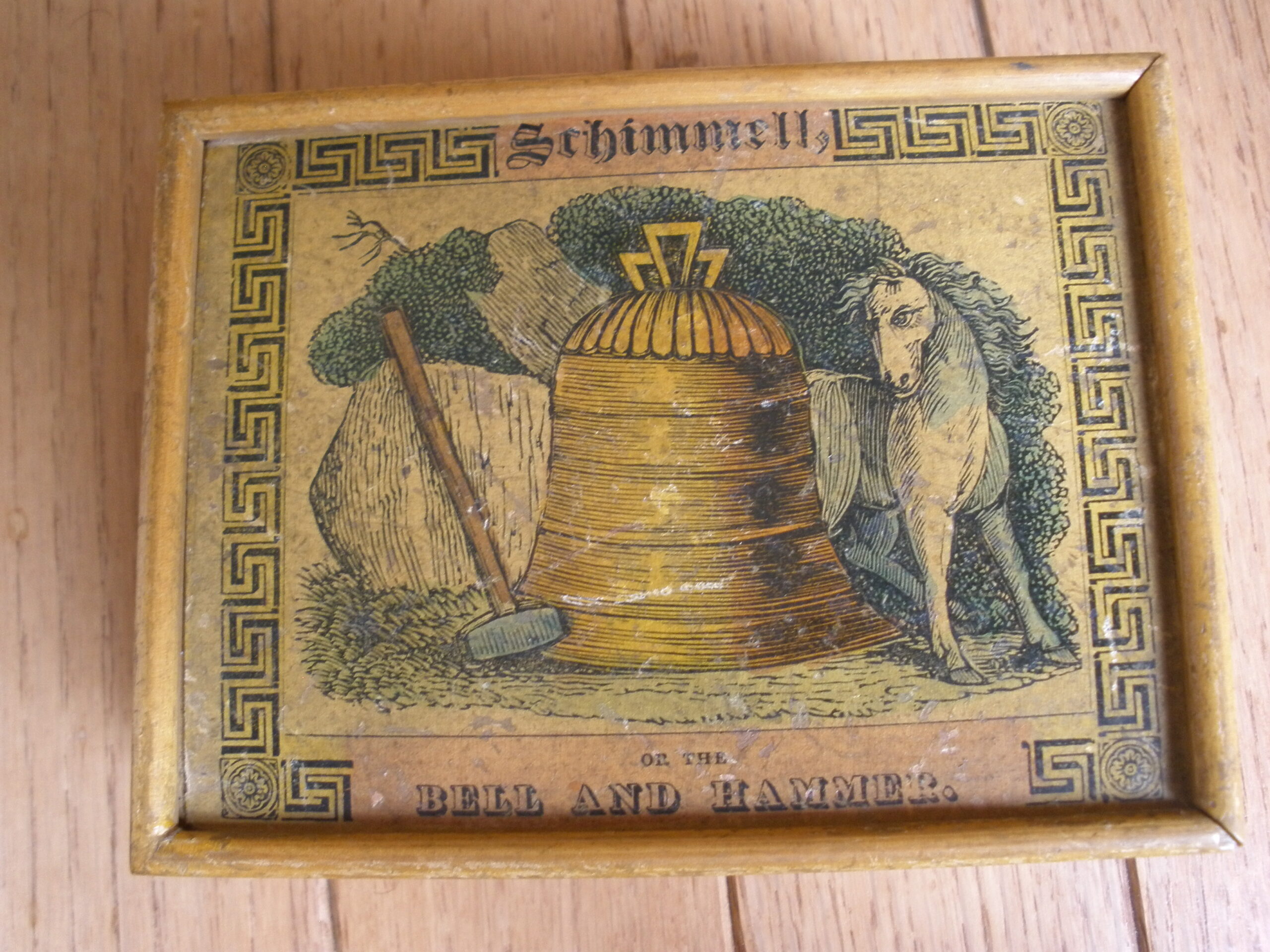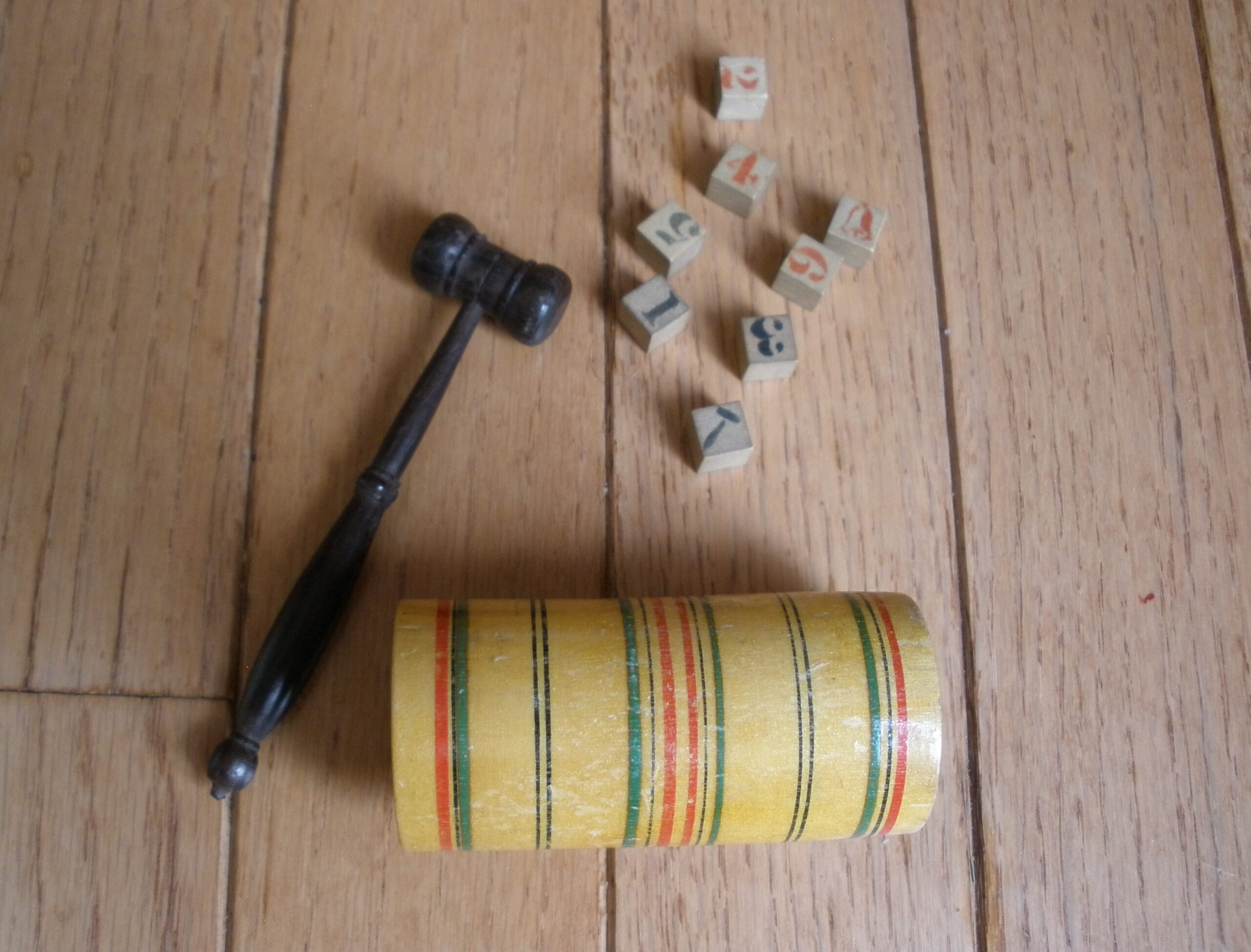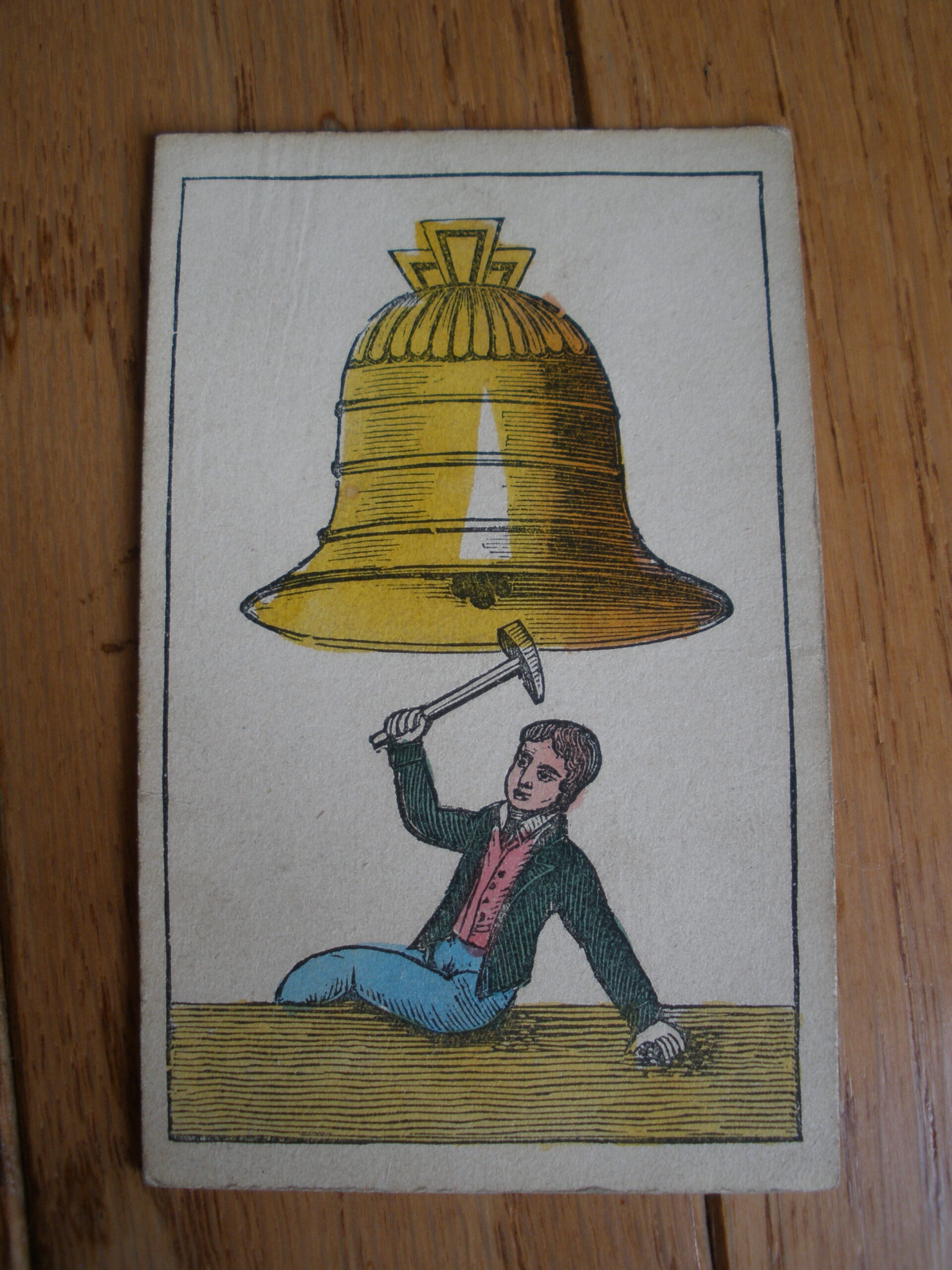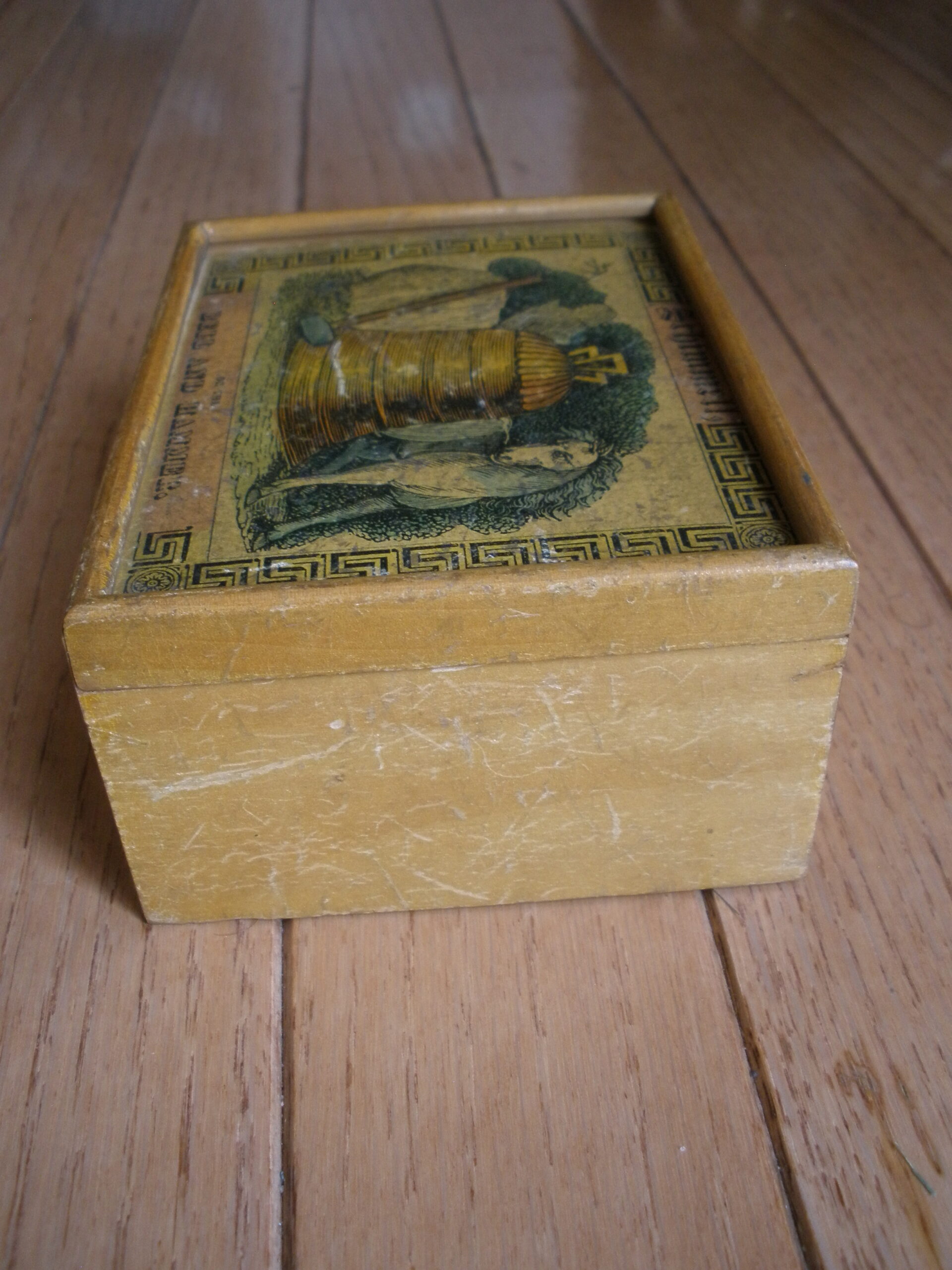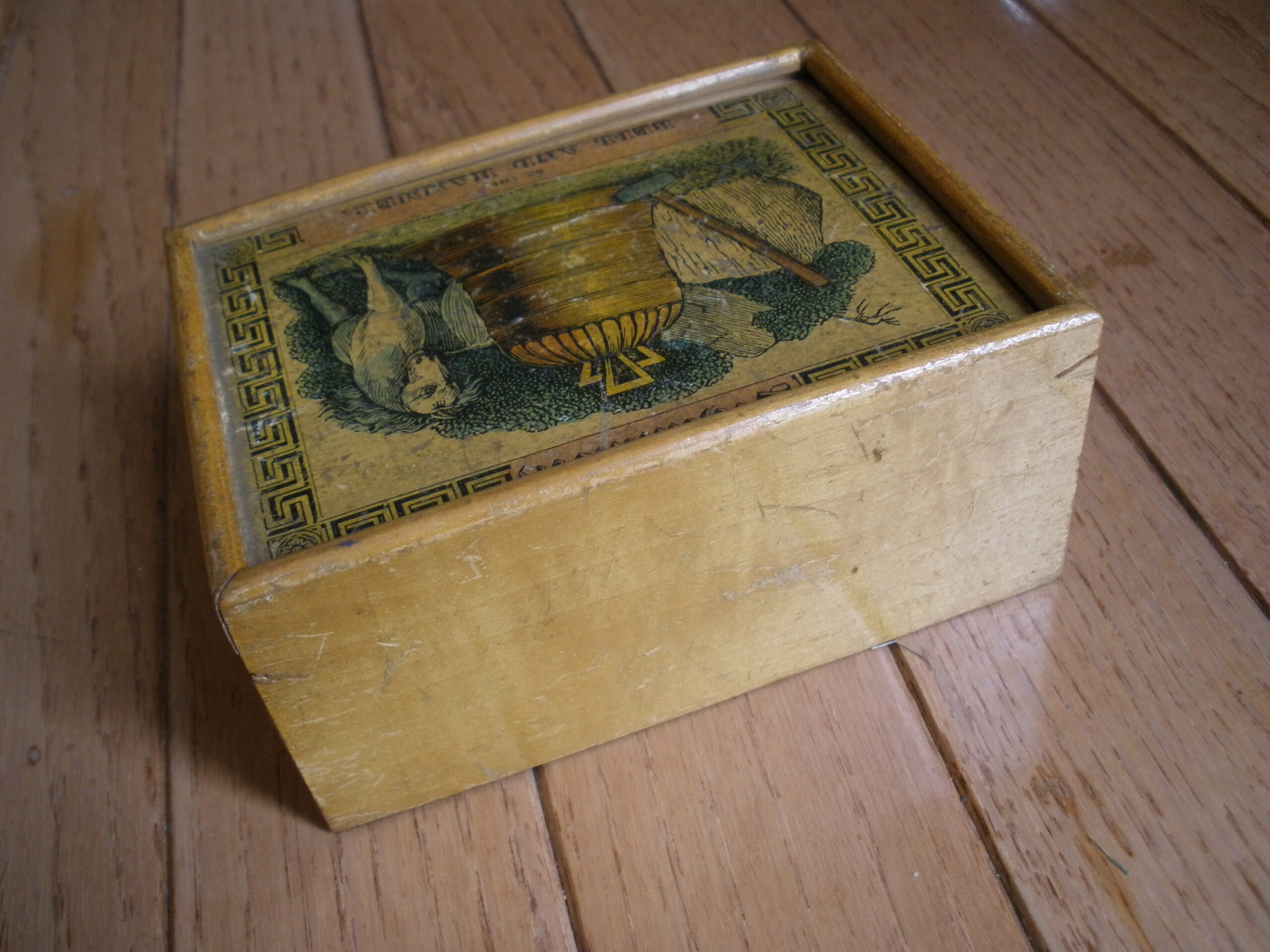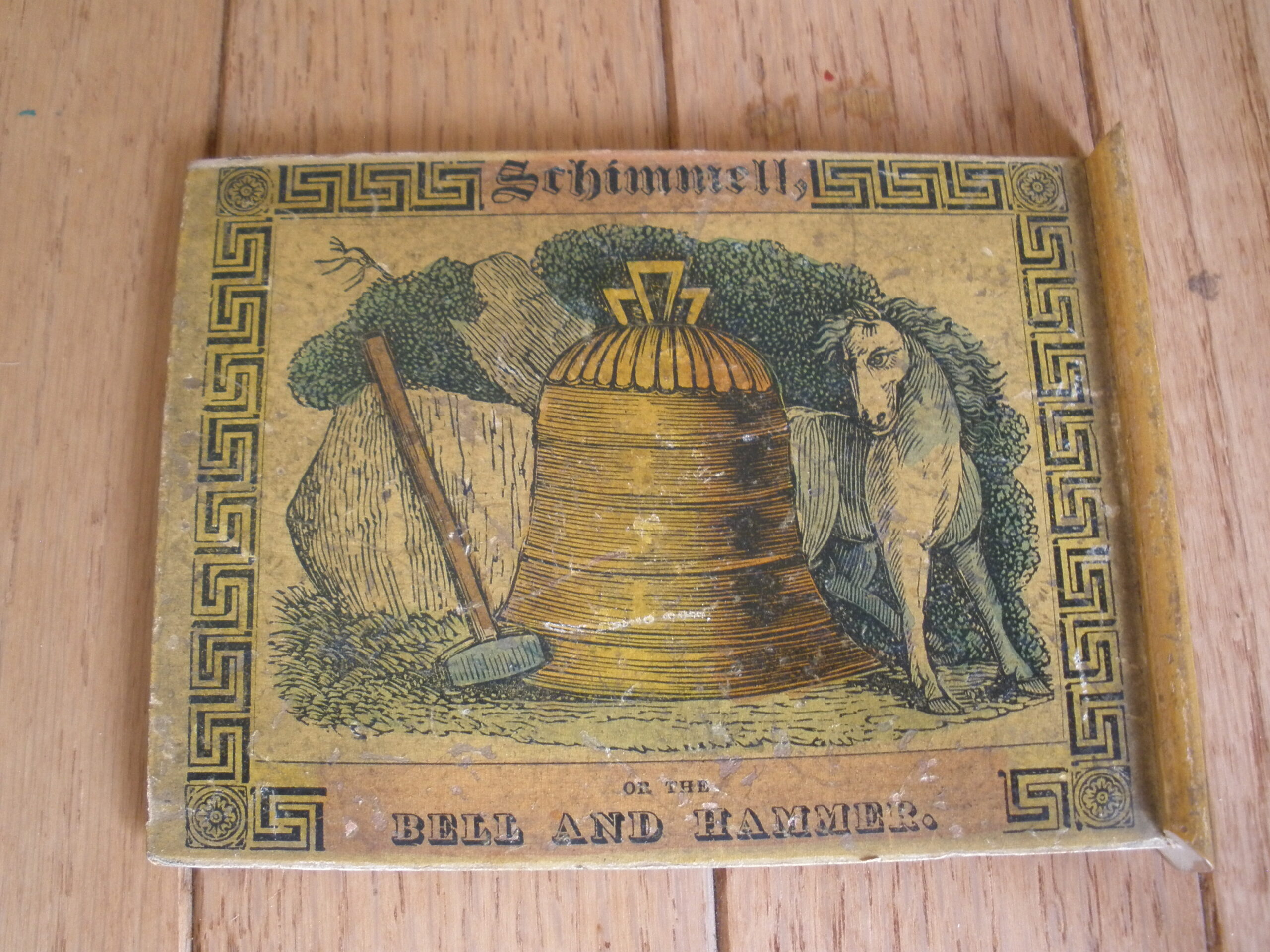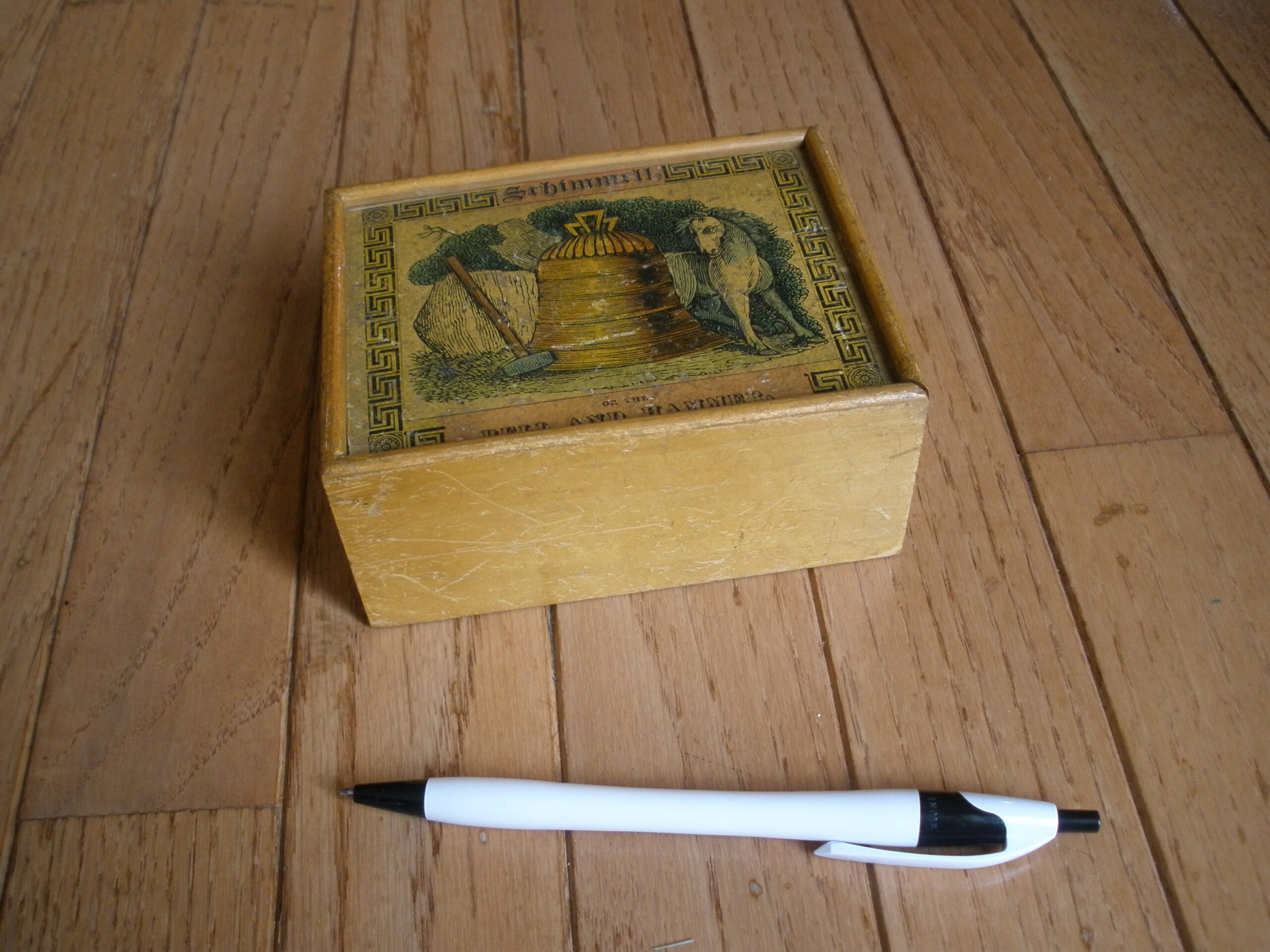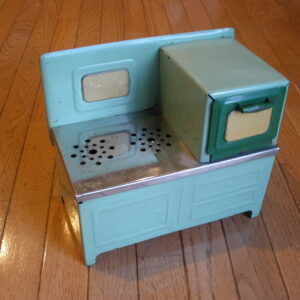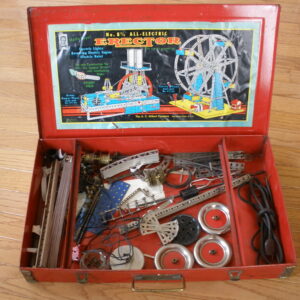For sale is a mid-century version of a VICTORIAN CHILDREN’S GAME – SCHIMMELL OR THE BELL AND HAMMER DICE GAME. This vintage game was made in England by R.F.G. Hollett, Greenbank, Sedbergh, Yorkshire. This game probably dates to the 1940s and is The game is stored in a wooden box with an illustrated sliding top. Although this game was mostly played during the Victorian era, this game was probably manufactured in the 1940s. The wood box measures about 4 3/4 inches, by 3 1/3 inches, by 2 inches deep. The game pieces include 5 illustrated cards, a wooden mallet, 8 wood dice, wooden dice shaker, and numerous circular cardboard counters. A great vintage toy.
In 1816, in England, J. Buckland published the Bell and Hammer table game. The game takes its name from the bell and hammer design and is played with 8 dice, a shaker, a mallet and 36 counters for each player. This dice game was quite popular in Europe in the 19th and early 20th centuries. In German, the game is known as Glocke und Hammer or Schimmel. The game was especially popular among the Jewish population and was often played during the Hanukkah festival. After the Second World War, the game almost completely disappeared. The holocaust may have been a factor.
Here are the rules:
Each player has 36 counters and each player to enter Phase One throws all 8 dice. The player with the highest throw becomes the Auctioneer and calls for 4 counters from each player for the pool./kitty. He then auctions off the five cards, one at a time, in exchange for counters that are added to the pool. A player without a card cannot participate in the round and if he is unlucky enough to be out for two successive rounds, his remaining counters are added to the pool.
The Auctioneer bangs his hammer on the table and begins the second phase. Each player throws the dice in turn. If the dice are blanks, the players pay one counter to the owner of the white horse. If the bell, or hammer, or both bell and hammer appear with the other dice remaining blanks , the owners of these cards pay one counter to the owner of the white horse. If the bell, or hammer, or both appear with one or more numbers on the dice, the Auctioneer pays the sum of the numbers in counters from the pool to the owner of the corresponding card or cards. If only blanks and numbers are thrown, the Auctioneer pays the sum of numbers thrown to that player. If a player throws a sum of numbers equal to the counters in the pool the game ends; but if a larger number is thrown, the player pays the difference to the holder of the inn, known as Mine Host. Mine Host opens the inn and phase three begins.
If a player throws all blank dice, the owner of the white horse pays one counter to Mine Host. If the bell or hammer or both are thrown, the other dice being blank, the owners of these cards pay one counter to Mine Host. If a number is thrown with the bell, or hammer or both, the owners of these cards pay Mine Host, the difference between the number thrown and the counters remaining in the pool. The corresponding number of counters are won from the pool if a player throws a number less than the counters in the pool. He wins the round by throwing the same number as there are counters in the pool, adding them to his store. The winner of one round is the auctioneer of the next.
The game ends when one player holds all the counters.

